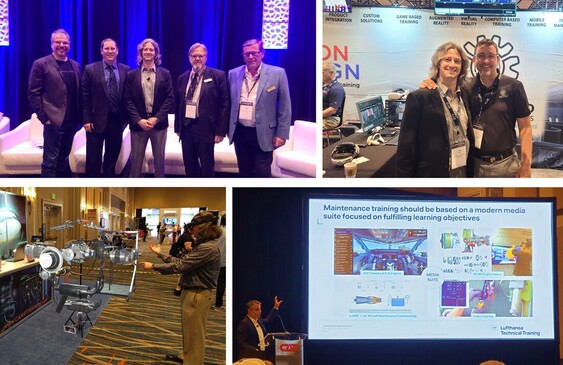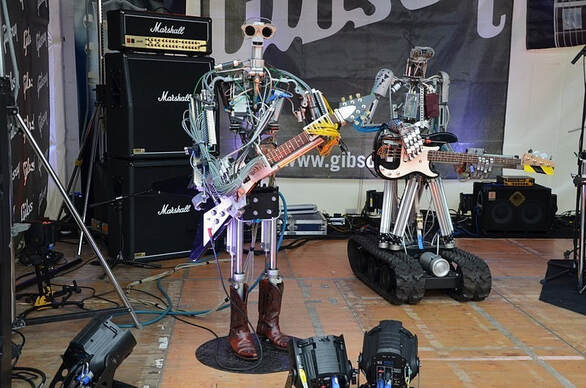 Shabnam Mitchell, PMP, PMI-ACP Shabnam Mitchell, PMP, PMI-ACP The Women's Conference of Florida took place last month in Tampa, and I had the pleasure of attending. The last time I attended in 2019, I met and heard inspiring life stories from Abby Wambach, Monica Lewinsky, and Reshma Saujani. A lot has changed in the last four years, and I was curious to hear how the landscape had changed for women and the conversations around them. This year, I was excited to hear from Lauren Simmons, the wolfette of Wallstreet, Diane Obrist on leveraging our strengths, Mckinsey on the 9th annual report on Women at Work, and Katty Kay, US Special Correspondent for BBC. While I enjoyed several panels and discussions, the speaker that resonated most with me was Katty Kay. Already reading her newly released book, The Power Code, I was struck by the distinct shift in her messaging. It wasn't that women needed to change to have more positions of power but that the definition of power needed to change. She explained that traditionally, power was defined as 'power over,' a definition that most women are not inclined towards. However, when female leaders were asked what power meant to them, the definition was overwhelmingly 'power to,' a purpose-driven tool focused on what can be achieved. The research done by Katty and her co-author Claire Shipman indicates that the examination of best practices in the workplace and relationships at home can produce a less ego-driven world that is more impactful. In short, having women in power was great for society overall. She answered the question, what is the benefit of breaking the glass ceiling and achieving gender parity?  All this made me think, how does having a female CEO shape the company? Here at QIC, we have all partaken in a stretch goals exercise to provide our leadership insights into what we would be excited to work on. Our CEO is using this information to guide the company's future to be inclusive of the goals of its employees. She uses her power to include her employees' aspirations in its vision. A more balanced, inclusive, and empathetic world where we leverage our strengths gives me hope for what's ahead.
0 Comments
 Julian Abich, Ph.D., Senior Human Factors Engineer Julian Abich, Ph.D., Senior Human Factors Engineer An estimated 602,000 new pilots, 610,000 maintenance technicians, and 899,000 cabin crew will be needed worldwide for commercial air travel over the next 20 years (Boeing, 2022). That’s about 30,000 pilots, 30,000 maintenance technicians, and 45,000 cabin crew trained annually. Additionally, urban air mobility is creating a new aviation industry that will require a different type of pilot and technician. It's clear there is a demand across the entire aviation industry to turn out new personnel at an increased rate. The demand should not just be met by numbers, but also by knowledge and experience. But how can you train faster, cheaper, and yet still maintain (and exceed) current high standards? Is the answer extended reality (XR) technology? (Hint: that's part of the solution). These are the problems being tackled by the aviation community and discussed at the World Aviation Training Summit (WATS). This year was the 25th anniversary of WATS. I've been attending and presenting at WATS for the past three years. In that time, I've seen the push for XR technology met with valid concerns for safety. If you know me, then you've heard me harp on the need for evidence-supported technology for training, so I can appreciate that stance. Technology developers have an ethical responsibility to conduct or commission the appropriate research before boasting claims of training effectiveness, efficiency, and satisfaction. There are many companies that came to the table with case studies showing the training value of their solution. Other companies want to do the same but may need more opportunities or research support. On the other side, some commercial airlines have been conducting XR studies internally, but the results tend to stay within the organization. The regulating authorities (e.g., FAA, ICAO, etc.) need the most convincing. They need to see the evidence and clearly understand where XR will be implemented during training. There may be an assumption that XR is the training solution but XR is just part of a well-designed, technology-enabled training strategy. It was great to hear many presenters convey this same message and reiterate the need for utilizing a suite of media suitable for developing or enhancing the necessary knowledge, skills, and abilities. We need collaboration between researchers, tech companies, and airlines, sharing research results to show the value of XR at all levels within the aviation industry. Otherwise, the work will continue to be done in silos, efforts will be duplicated, progress will be stunted, and personnel demands will fail to be met. We all need to contribute to the scientific body of knowledge if we want to move the industry in the direction needed to adapt and prosper.
Reference: Boeing. (2022, July 25). Boeing forecasts demand for 2.1 million new commercial aviation personnel and enhanced training. https://services.boeing.com/news/2022-boeing-pilot-technician-outlook  Michael Schwartz, Ph.D., Human Factors Engineer I Michael Schwartz, Ph.D., Human Factors Engineer I I recently attended the 13th Applied Human Factors and Ergonomics (AHFE) Conference in New York City. Like a busy NYC street, the topics covered were an eclectic mix of human factors solutions highlighting advances in training, performance, safety, and usability in nearly every human endeavor. The presentations I saw at AHFE emphasized that human factors has embraced new technologies as tools for investigation and as objects of study. Here are just some of the interesting things at AHFE 2022:
Like the massive screens in Times Square, the above items were certainly attention-grabbing and my first reaction to much of what I saw was “cool.” Then, questions began to go through my mind as I started to think about what’s beyond this first impression. Is the alphabet instructional game enjoyable and thus motivating children to stay engaged? Is it intended to supplement parent-child interaction? Or replace it? The AR laser-based project system may improve productivity, but does it improve safety? Do the workers understand the system and enjoy using it? Are autopsies currently being done poorly and, if so...how? You get the idea.
The AHFE keynote address by Dr. Michael van Lent, President and CEO of Soar Technology, discussed the 4th Industrial Revolution. This revolution is brought about by a combination of technologies that afford the opportunity to blur the lines between the physical, digital, and biological, allowing new information, products, and services to emerge. This led me to think about technology's intended and unintended uses and how humans are changed simply because of their interactions with technology. Often, we focus on the obvious, albeit “cool”, intended use without considering secondary and even tertiary human-centered benefits and consequences. For instance, I hope that a children’s game for teaching the alphabet is motivational and effective while also promoting rich social interaction among parents and children. As human factors researchers, we should consider how to measure the unintended benefits and how humans are changed because of technology interaction. For example, how does adaptive lighting in automobiles influence not only driver emotions but also driver focus and reaction time? While no single study can examine every effect, intended or unintended, our methods and measures must be expanded to account for the ever-increasing complexity of human systems interaction. What are the types of questions you ask when you see new tech or research? Are you able to move beyond the cool? |
AuthorsThese posts are written or shared by QIC team members. We find this stuff interesting, exciting, and totally awesome! We hope you do too! Categories
All
Archives
June 2024
|



 RSS Feed
RSS Feed